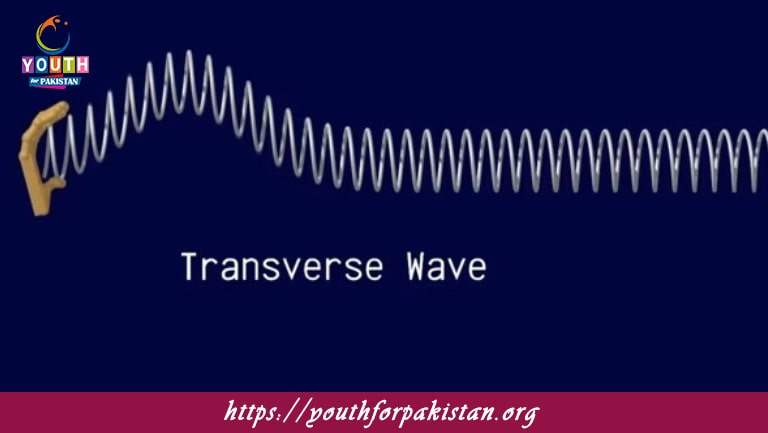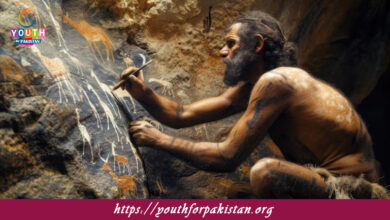Transverse Waves MDCAT MCQs with Answers

Welcome to the Transverse Waves MDCAT MCQs with Answers. In this post, we have shared Transverse Waves Multiple Choice Questions and Answers for PMC MDCAT 2024. Each question in MDCAT Physics offers a chance to enhance your knowledge regarding Transverse Waves MCQs in this MDCAT Online Test.
Transverse Waves MDCAT MCQs Test Preparations
In a transverse wave, the particles of the medium move:
a) Parallel to the direction of wave propagation
b) Perpendicular to the direction of wave propagation
c) Randomly
d) In the same direction as the wave source
Which of the following is an example of a transverse wave?
a) Sound wave
b) Light wave
c) Seismic P-wave
d) Pressure wave
The peak of a transverse wave is known as:
a) Trough
b) Crest
c) Node
d) Antinode
The lowest point of a transverse wave is called the:
a) Crest
b) Trough
c) Node
d) Antinode
The distance between two consecutive crests of a transverse wave is known as:
a) Frequency
b) Amplitude
c) Wavelength
d) Period
The maximum displacement of a particle in a transverse wave is called the:
a) Wavelength
b) Frequency
c) Amplitude
d) Period
The speed of a transverse wave is given by the formula:
a) Speed = Frequency × Wavelength
b) Speed = Wavelength / Frequency
c) Speed = Amplitude × Frequency
d) Speed = Wavelength / Amplitude
When a transverse wave is reflected from a fixed end, it:
a) Inverts
b) Does not invert
c) Changes speed
d) Changes frequency
In a transverse wave, the energy transported by the wave is proportional to:
a) The square of the amplitude
b) The amplitude
c) The frequency
d) The wavelength
The time taken for one complete cycle of a transverse wave is called the:
a) Frequency
b) Wavelength
c) Period
d) Amplitude
The frequency of a transverse wave is:
a) The reciprocal of the period
b) The wavelength divided by the speed
c) The amplitude divided by the speed
d) The speed divided by the wavelength
The principle that states that the resultant displacement of two overlapping transverse waves is the sum of their individual displacements is known as:
a) Reflection
b) Refraction
c) Superposition
d) Diffraction
The phenomenon where two transverse waves meet and combine to form a resultant wave is known as:
a) Reflection
b) Refraction
c) Interference
d) Diffraction
The wave created by shaking one end of a string up and down is an example of a:
a) Longitudinal wave
b) Transverse wave
c) Mechanical wave
d) Electromagnetic wave
When two transverse waves are in phase, they will:
a) Constructively interfere
b) Destructively interfere
c) Reflect
d) Diffract
The angle between the direction of the wave and the direction of vibration in a transverse wave is:
a) 90 degrees
b) 180 degrees
c) 45 degrees
d) 0 degrees
In a transverse wave, the wave’s amplitude is measured from the:
a) Trough to the crest
b) Node to the antinode
c) Wavelength to the frequency
d) Crest to the trough
The behavior of a transverse wave as it passes from one medium to another is most affected by:
a) Frequency
b) Wavelength
c) Amplitude
d) Speed
In a transverse wave, the distance between two consecutive troughs is:
a) The wavelength
b) The amplitude
c) The period
d) The frequency
The speed of a transverse wave on a string is determined by:
a) The tension in the string and its mass per unit length
b) The amplitude and frequency
c) The frequency and wavelength
d) The phase and velocity
The interference pattern produced when two transverse waves meet in phase will result in:
a) Destructive interference
b) Constructive interference
c) Refraction
d) Diffraction
The phenomenon where a transverse wave is bent around an obstacle is called:
a) Refraction
b) Reflection
c) Diffraction
d) Absorption
The process by which transverse waves spread out as they pass through a small aperture is known as:
a) Refraction
b) Reflection
c) Diffraction
d) Interference
When a transverse wave is reflected from a free end, it:
a) Inverts
b) Does not invert
c) Changes amplitude
d) Changes frequency
The principle of superposition is used to explain:
a) The formation of standing waves
b) The reflection of waves
c) The Doppler effect
d) The dispersion of light
The energy transported by a transverse wave is proportional to the:
a) Square of the frequency
b) Square of the amplitude
c) Wavelength
d) Speed
The oscillation of particles in a transverse wave is:
a) In phase with the wave’s direction
b) Perpendicular to the direction of wave propagation
c) Along the direction of wave propagation
d) Random
The angle of incidence is equal to the angle of:
a) Reflection
b) Refraction
c) Diffraction
d) Absorption
The wavelength of a transverse wave is the distance between:
a) Two consecutive crests or troughs
b) Two consecutive nodes
c) A crest and a trough
d) Two consecutive antinodes
The time it takes for one complete oscillation of a transverse wave is called:
a) Frequency
b) Wavelength
c) Period
d) Amplitude
The frequency of a transverse wave is:
a) The number of cycles per second
b) The distance between two crests
c) The height of the crest
d) The time for one cycle
In a transverse wave, the phase difference between two crests is:
a) 90 degrees
b) 180 degrees
c) 360 degrees
d) 0 degrees
When a transverse wave travels through a medium, the medium’s particles move:
a) In the direction of wave travel
b) Perpendicular to the direction of wave travel
c) Randomly
d) In the same direction as the wave source
The amplitude of a transverse wave is:
a) The distance from the equilibrium position to a crest
b) The distance between two consecutive crests
c) The distance between a crest and a trough
d) The distance from a node to an antinode
The speed of a transverse wave on a stretched string is:
a) Dependent on the string’s tension and mass per unit length
b) Dependent on the wave’s amplitude
c) Independent of the medium
d) Equal to the frequency multiplied by the amplitude
The term “polarization” applies to:
a) Longitudinal waves
b) Transverse waves
c) Both longitudinal and transverse waves
d) Stationary waves
When a transverse wave is incident on a boundary, part of it is:
a) Transmitted and part of it is reflected
b) Absorbed entirely
c) Completely refracted
d) Converted into a longitudinal wave
The phenomenon where two transverse waves overlap to form a resultant wave is known as:
a) Refraction
b) Reflection
c) Interference
d) Absorption
The transverse wave on a string is a:
a) Standing wave
b) Traveling wave
c) Stationary wave
d) Reflective wave
The displacement of particles in a transverse wave is measured from:
a) The equilibrium position
b) The amplitude
c) The frequency
d) The velocity
If you are interested to enhance your knowledge regarding Physics, Chemistry, Computer, and Biology please click on the link of each category, you will be redirected to dedicated website for each category.





